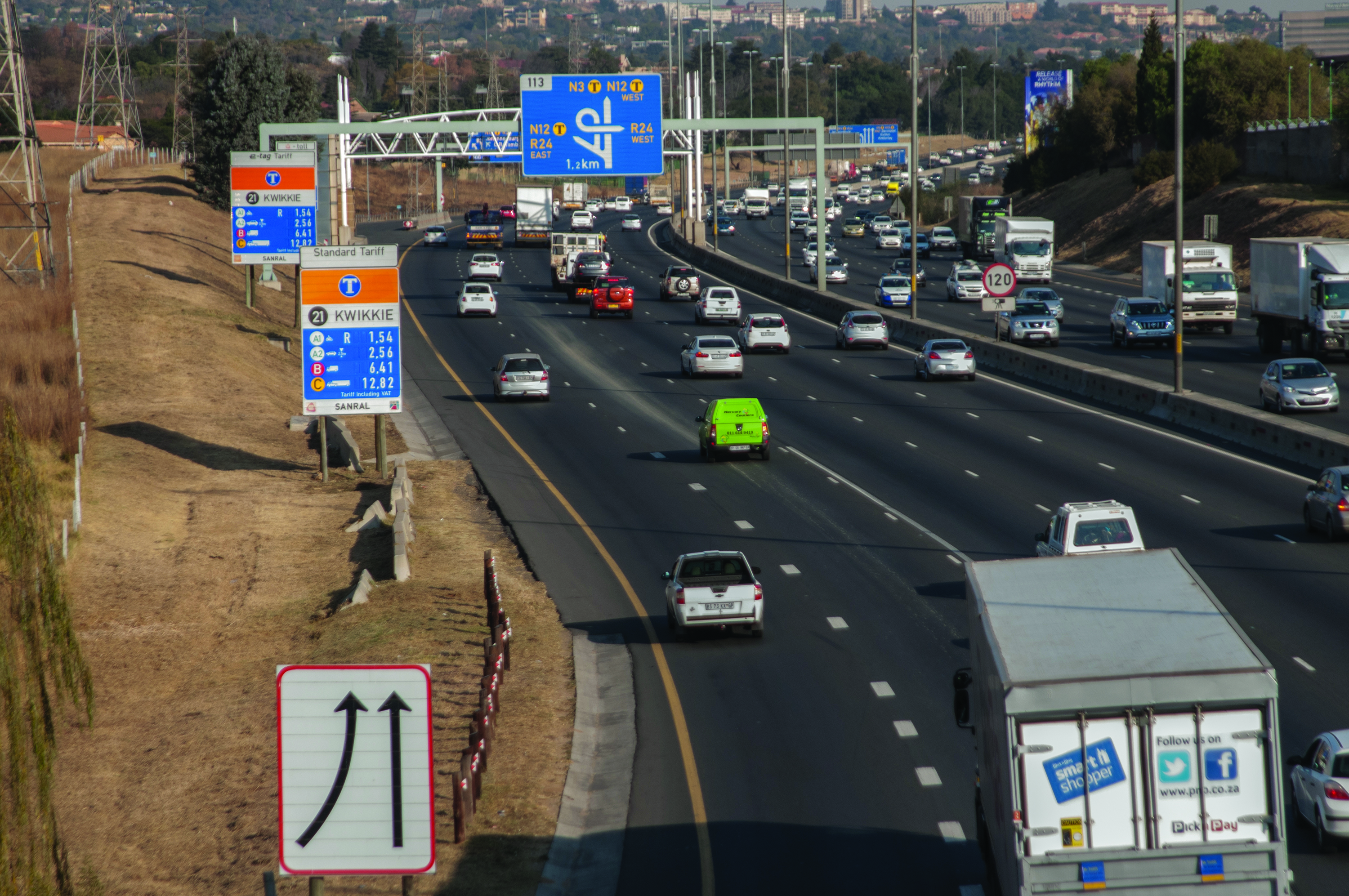Paying for roads that used to be ‘free’

Opponents of road tolling are certainly not stupid – we know that. Their arguments deserve serious consideration. But in the end, most of their concerns are selfserving. Few people seem willing to look at the greater good.
Should any person look at the issue objectively – not from the viewpoint of how it would affect their own wallet – then the benefits of tolling would swamp the potential costs.
There’s a basic economic rule here: when you give out something valuable for less than its true value, shortages will result. This means
that instead of paying with money, you pay with time and effort. In the case of roads, this rule materialises in the form of congestion, gridlock, time spent in traffic. We all remember what driving on Gauteng’s provincial freeways used to be like before urban toll roads were constructed.
For a parallel, think of Soviet shoppers spending their lives in endless queues to purchase artificially low-priced but exceedingly scarce goods.
Numbeo’s 2016 Traffic Index shows that South Africa is the fifth most trafficcongested country in the world. On average, Numbeo reports that South Africans spend 43 extra minutes in traffic due to congestion (going one way). During last year’s EcoMobility World Festival and Transport Month, the economic cost of congestion in the whole of South Africa was estimated at more than R1bn. There are 1.5 million vehicles just in Johannesburg and, at an average delay of 43 minutes each way, that’s more than 675 000 hours lost every year – without even considering multiple passengers per vehicle.
With the government struggling to meet even its current socio-economic obligations, how do we solve this growing burden on our nationwide transportation system?
The government does not have sufficient funds to improve existing freeways in meaningful ways to reduce congestion. This is a problem common throughout the world – even more so in emerging economies, which are experiencing rapid spikes in the number of vehicles on their roads. The solution in many countries is toll roads.
It saves commuters time and money, reduces congestion, creates safer driving environments, improves fuel efficiency, reduces pollution and supports business growth.
The toll roads are built at no cost to taxpayers. The concept behind them is to place the funding burden on the users, rather than the over-used petrol levy. Why should you pay to use roads that have already been paid for? Maintenace and sustainability.
Many of our roads (and around the world) are anything from 25-60 years old, at which point maintenance becomes a major cost, just as it does with older cars.
In summary, toll roads give us
Free traffic flow:
Most toll roads employ
technology that reduces delays and
improves the free flow of traffic. For
instance, instead of stopping to pay,
drivers either pay with an electronic tag
connected to a prepaid account, or by
having their license plate recorded and delivering monthly bills.
More time: South Africans waste 7.5 hours a week in traffic. When drivers take the toll road option, they reduce their own wasted time, as well as that of all traffic.
Greater safety: Toll roads have an important role in alleviating congestion and therefore incidents.
Reduced pollution and fuel consumption: Toll roads reduce the hours spent idling in gridlocked traffic and enable vehicles to move at more fuel-efficient speeds.
Benefits to businesses: Using toll roads helps businesses save time and money by improving productivity and economic vitality.
In 2010 there were concerns regarding congestion on the Ben Schoeman highway between Johannesburg and Pretoria, at an estimated cost of R15m an hour.
Given national budgetary constraints and the ability of tolling to deliver much-needed road infrastructure far quicker than taxation, tolling is something we all should consider for road funding.
Liam Clarke is Bakwena’s
commercial manager

Drivers are key
partners in road safety
Long weekends in South Africa have the potential to become road nightmares. N3 Toll Concession (N3TC) is making an urgent appeal to road users not to drive (or park) in emergency lanes. It is illegal (and dangerous) to drive in the emergency lane. The only time you are permitted to move your vehicle into an emergency lane is when there is a bona fide emergency.
N3TC manages the N3 Toll Route between Heidelberg in Gauteng and Cedara in KwaZulu-Natal. A recent incident on the N3 Toll Route, where a truck jack-knifed and blocked the road near Mooi River, prompted N3TC to make this urgent call.
N3TC’s commercial manager, Con Roux, described the incident: “Traffic came to a complete standstill where the truck jack-knifed. The problem was exacerbated when impatient road users moved into the emergency lanes and prevented emergency services from gaining access to the crash scene.”
The National Road Traffic Act clearly prohibits vehicles from driving in the emergency lane and/or using the lane to the left of the yellow line as a passing lane.
“We are concerned that road users who act with impunity may jeopardise road safety, prevent the
delivery of urgent medical services and inconvenience thousands of lawabiding road users by extending traffic delays,” said Roux.
“During the recent incident, emergency services could not use the emergency lanes. Service vehicles and authorities had to use alternative routes, delaying recovery time.”
Peak traffic conditions may cause delays and place an additional burden on authorities and road users.
“Significant resources are in place on the N3 Toll Route to manage traffic flow and provide emergency services, but road users need to play
“It is strongly recommended that road users travel outside of peak periods and if they are going to be on the road at peak times, we advise them to obtain advance traffic information,” said Roux.
“Congestion often occurs on the Van Reenen’s Pass section of the N3 Toll Route. About 1 700 vehicles per hour can safely be accommodated on Van Reenen’s Pass at any given time.
Should it be required, traffic authorities will manage traffic flow towards Gauteng by the closure of toll lanes at the Tugela Plaza to ensure safety along the pass. Heavy vehicles are to keep left and may not – by law – overtake on sections of Van Reenen’s Pass,” he said.
TRAC keeps N4 Toll Route world-class
To ensure a road like the TRAC N4 Toll Route complies with world standards, regular upgrading, rehabilitation and maintenance are necessary. Although this may at times be inconvenient, the long-term benefits outweigh the short-term traffic disruptions.
Expansion and rehabilitation work between the Clewer and OR Tambo Interchanges began in April and will see a portion of this section of the highway expanded to a six-lane facility. Road works will be conducted in the median, for the expansion works on the N4 section 3 between Km19 and Km31. The upgrade will also require the widening of eight bridges.
This R290m project includes pavement rehabilitation and ancillary works (guardrails and drainage upgrades). Traffic is not expected to be severely disrupted, as two lanes, with deviations, will be operational.
Another section of the TRAC N4 toll road under construction is between Malaga Hotel and Montrose intersection in Elandsvalley. This project, which also started in April, consists of adding 5km of passing lanes. Extensive rehabilitation of 23km of pavement will be carried out, as well as the widening of culverts, bridges and ancillary works. Permanent stop-and-gos will be operational throughout the 18-month project. Average delay of 30 minutes is expected. TRAC’s upgrades on the Mozambican side of the N4 toll road, between Ressano Garcia and Moamba, includes the rehabilitation of the road and six bridges, including the Moamba interchange. Two permanent stop-and-
gos are in effect in this section and delays of about 15 minutes can be expected.
The upgrade of the N4 in Maputo (MDC sections 19 and 20) started in May 2017 and will include comprehensive road works between the Shoprite Centre Intersection in Matola and 16 of June Circle in Maputo. The project includes the construction of two additional lanes (one in each direction), which will result in a six-lane carriageway in this section – the busiest on our 570km transborder route.
The rehabilitation of the pavement and the widening of seven structures will also form part of the construction works, which are estimated to take approximately 20 months to conclude. Although there will be no lane closures, lane deviations and partial closure of intersections will require speed restrictions as part of the safety measures. This may affect traffic flow, especially during peak times.
The BIC Intersection is partially closed to accommodate Phase 1 of the project. The closure has resulted in the following traffic flow limitations:
a.) Road users coming from the direction of Cinema 700 or from the old Matola road are unable to cross the N4. b.) Road users travelling westbound (from Maputo/Shoprite) are unable to turn right.
